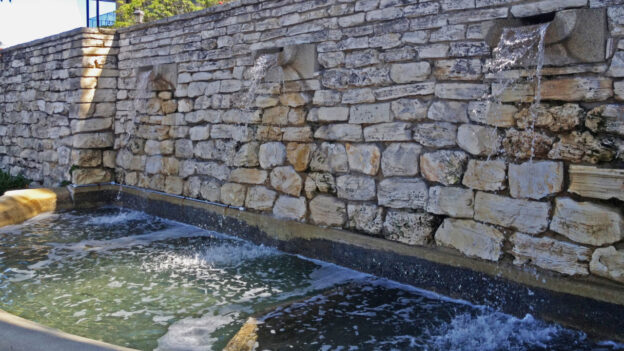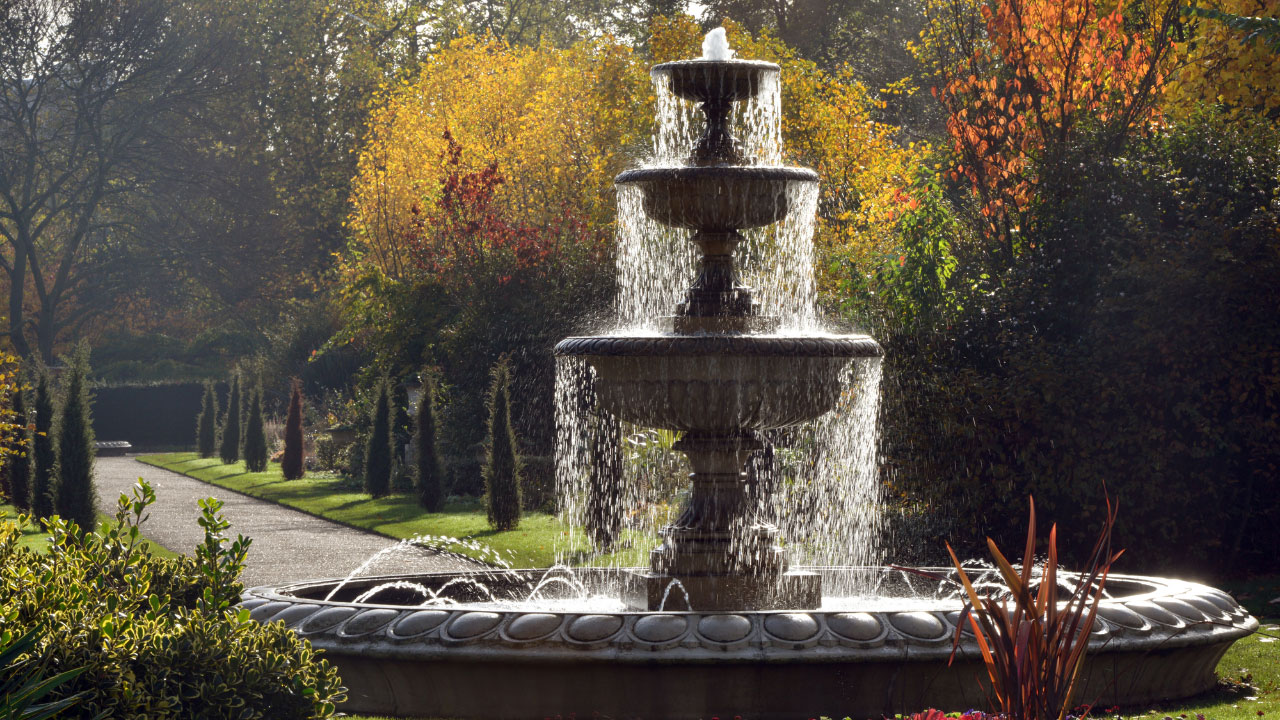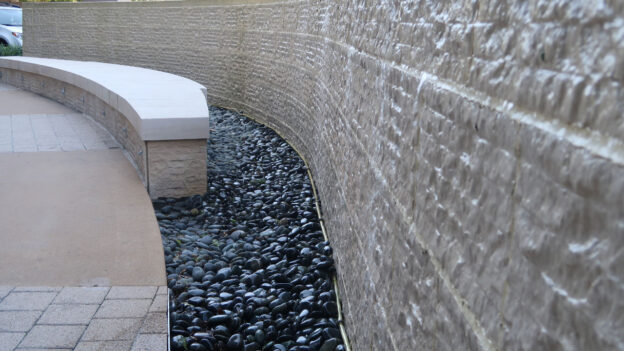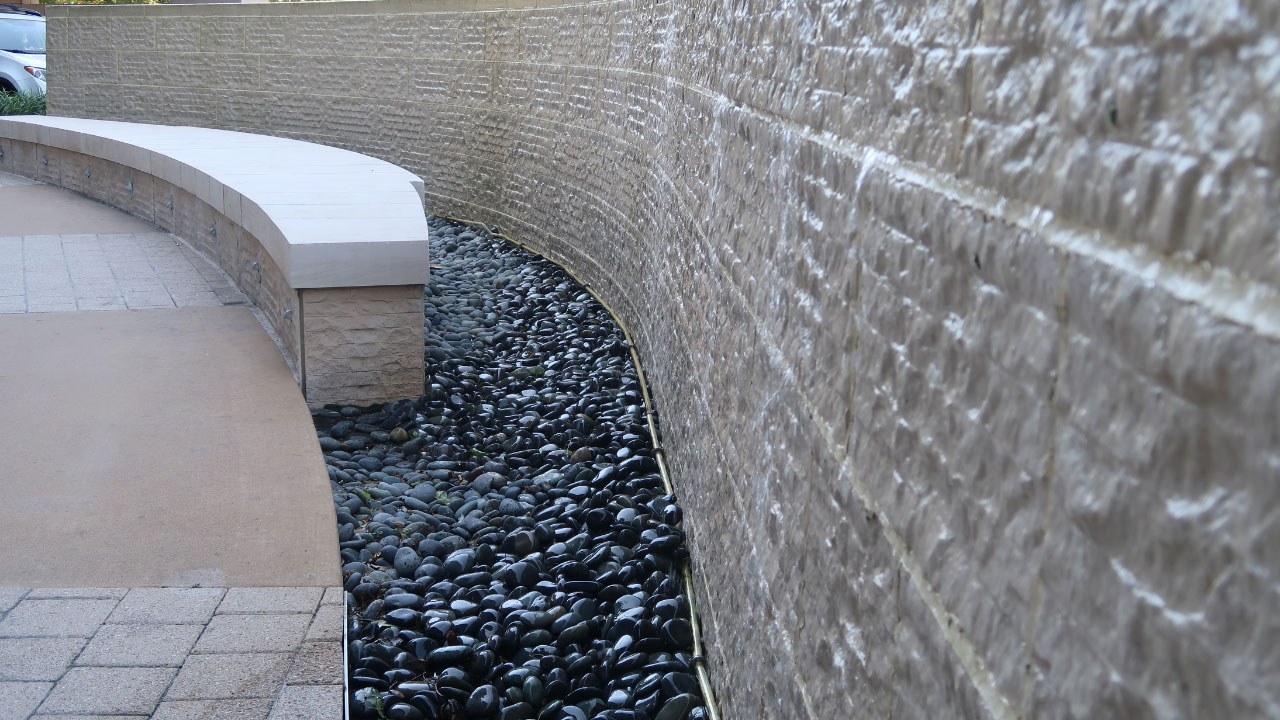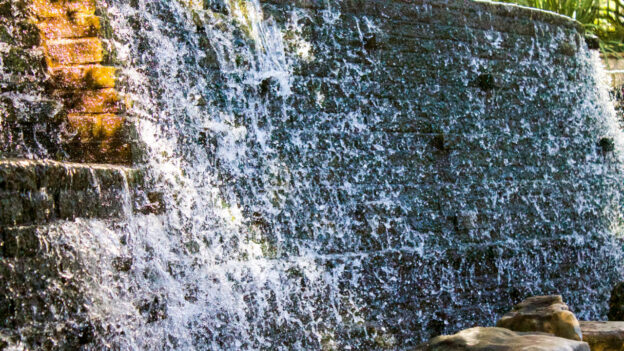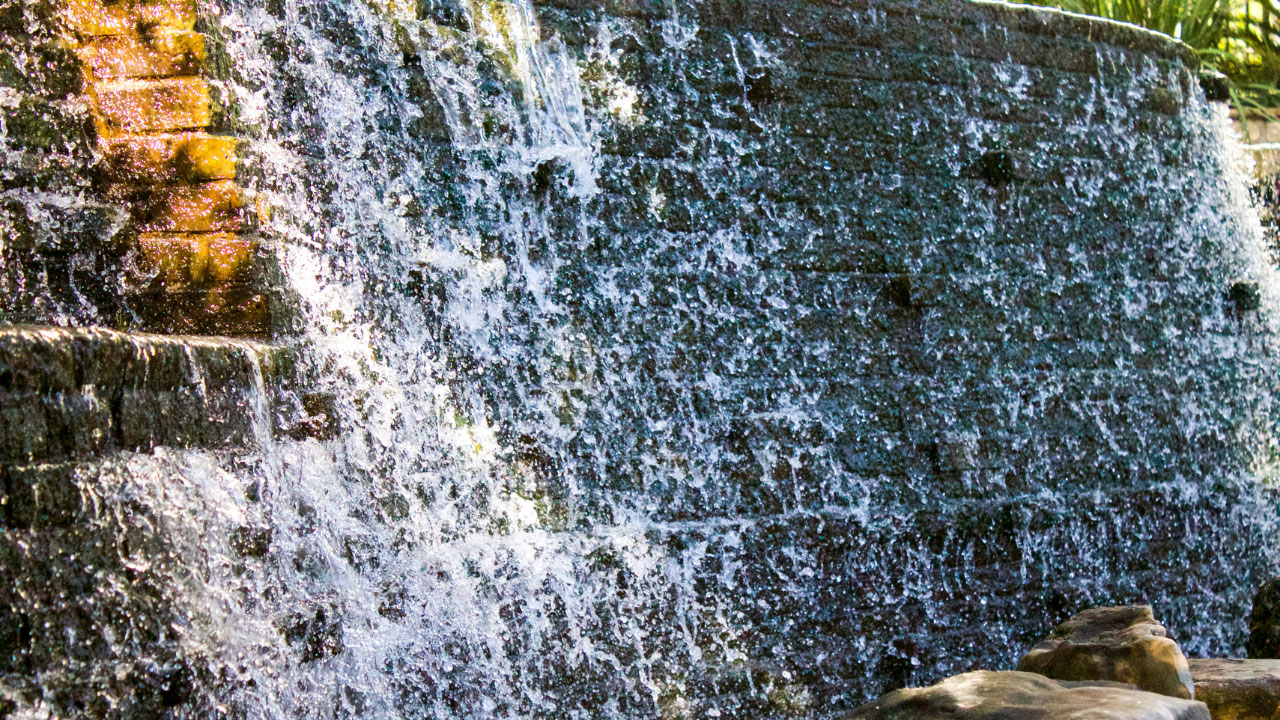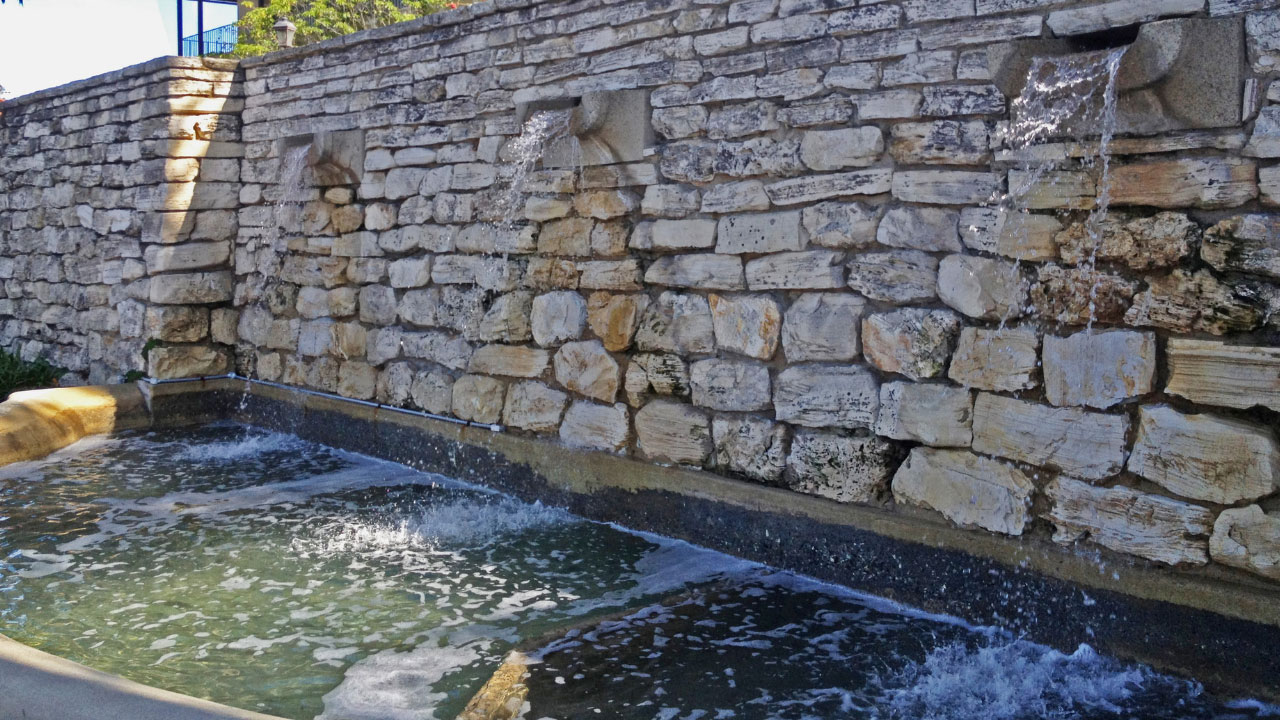
Key Takeaways
- Select a spot that is level, close to a power source, and protected from harsh weather conditions to ensure the fountain’s longevity and ease of maintenance.
- Opt for materials like stone, concrete, or stainless steel that can withstand the elements and complement the outdoor environment.
- Follow a detailed installation process that includes securing the fountain to a strong wall, ensuring it is level, and properly connecting the water and power supply.
- Keep the fountain clean, change the water regularly to prevent algae growth, and perform seasonal maintenance to protect it from extreme weather conditions.
- Beautify the space around the fountain with appropriate plants, lighting, and decorative stones to enhance the fountain’s aesthetic and integrate it into your garden.
Adding wall fountains to your outdoor space not only enhances its beauty but also brings a sense of calm and tranquility. Proper installation is crucial for the optimal functioning and longevity of the fountain.
Installing wall fountains involves:
- Selecting the ideal location
- Preparing the site
- Mounting the fountain
- Connecting the water supply and power
- Performing necessary maintenance to ensure optimal functionality and aesthetics
This guide simplifies the process into clear, manageable steps, ensuring that your fountain not only looks great but operates efficiently as well.
Choosing The Right Location
Selecting the perfect spot for your wall fountain involves several key considerations:
-
- Exposure to Elements: Choose a location that protects the fountain from harsh weather, which can extend its lifespan and reduce maintenance needs.
- Visibility: Place the fountain where it can be easily seen and enjoyed, ideally from your favorite outdoor seating area.
- Proximity to Power Sources: If the fountain is electrically powered, ensure it’s near a power source or plan for appropriate wiring.
- Wall Suitability:
-
- The wall must be level and capable of supporting the fountain’s weight.
- Use a moisture meter to check for dampness—waterproof or seal the wall if necessary to prevent damage.
Selecting The Perfect Wall Fountain
Choosing a fountain that complements your space is vital. Consider the following:
-
- Size and Style: Ensure the fountain’s dimensions fit well with the space without overwhelming it. Style should complement your garden’s aesthetic.
- Material:
-
- Stone and Concrete: Durable and traditional, but heavy.
- Stainless Steel: Modern, easy to clean, though more costly.
- Fiberglass and Resin: Lightweight and versatile in design but may require a higher budget.
- Sound: Some prefer the gentle babble of a small stream, while others may enjoy the robust sound of falling water. Listening to the fountain before buying can help you choose the right one for the ambience you want to create.
Gathering Necessary Tools And Materials
Before starting your wall fountain installation, it’s important to have all the necessary tools and materials on hand. This ensures a smooth and efficient installation process:
- Tools Needed:
-
-
- Drill with various bit sizes for different wall materials
- Level to ensure the fountain hangs evenly
- Wrench set for tightening and adjusting components
- Rubber mallet for adjusting parts without damage
-
- Materials Needed:
-
- Anchors and brackets to secure the fountain to the wall
- High-quality sealant for moisture protection, especially if the wall is exposed to elements
- Possibly additional hoses or connectors depending on the fountain design
It’s crucial to select materials that are durable and suitable for outdoor conditions to enhance the longevity of your fountain.
Preparing The Power Source
Powering your wall fountain can be done through traditional electrical sources or by using alternative energy:
- Electrical Connections: If your fountain operates with a standard plug, you’ll need access to an electrical outlet. Consider hiring a professional to install an outdoor-rated outlet if one is not readily available near the desired location.
- Alternative Power Sources: Solar panels are a great option for powering a fountain, especially in sunny locations. They require minimal maintenance and can be placed a short distance from the fountain, connected with a low-voltage cable buried underground for aesthetics and safety.
For either option, ensuring that all electrical components are safely installed and water-resistant is crucial for safety and functionality. It might be beneficial to consult with or hire an electrician to handle this part of the installation to ensure it meets local building codes and safety standards.
Installing The Wall Fountain
Installing the wall fountain involves precise preparation and execution to ensure it is both secure and operates correctly:
- Marking the Drill Points: Carefully mark the points on the wall where you will drill to attach the fountain’s mounting brackets. Use a level to ensure these marks align properly, maintaining the fountain’s balance.
- Securing the Fountain: Drill into the marked points and install anchors or bolts. Attach the mounting brackets securely, then hang the fountain on these brackets.
- Ensuring Level Installation: Double-check that the fountain is level; adjust as necessary using shims or adjusting the mounting brackets.
- Connecting and Testing the Pump: Attach the pump to the fountain’s tubing and ensure it’s correctly connected to the power source. Fill the fountain with water and test the pump, checking for any leaks or issues in the water flow. Make adjustments as needed to ensure smooth operation.
Adding Water And Final Touches
When filling wall fountains, it’s essential to ensure the water level is correct to avoid splashing and maintain a smooth flow. Begin by slowly adding water and monitor how it disperses and cascades. Adjust the water flow from the pump to minimize splashing and ensure the water circulates smoothly without spilling over the edges.
To enhance your fountain’s appeal, add elements near it that complement its design:
- Plants: Use ferns, hostas, and irises around the base of your fountain. They will create a lush, green backdrop. Colorful flowers like impatiens and begonias can add vibrant pops of color.
- Lighting: Add subtle lighting, like solar LED lights. They’ll light the fountain at night. This will make the water sparkle and the foliage look better.
- Decorative Stones: Laying pebbles or decorative stones around the fountain can help blend it into your garden. They provide a textured ground cover that matches the fountain’s look.
Maintenance And Care Tips
To keep your fountain in optimal condition, regular cleaning and maintenance are crucial. Here are some essential tips to ensure your fountain operates efficiently and remains visually appealing:
- Regular Cleaning: Clean your fountain every two to three months or more frequently if you notice algae or debris accumulation. Use a soft brush and gentle, non-toxic cleaners to scrub the fountain’s surfaces and remove any build-up.
- Water Changes: Refresh the water periodically to prevent algae growth and maintain clarity. This is especially important in warmer climates where water can evaporate quickly.
- Seasonal Maintenance: In regions with freezing temperatures, it’s vital to winterize your fountain by draining all water and covering it to prevent ice damage. During very hot weather, make sure to top off the water level regularly to compensate for evaporation.
- Pump Care: Regularly check and clean the fountain’s pump to ensure it’s free of debris, which can hinder its performance. If the pump shows signs of wear or damage, consider replacing it to maintain efficient water flow.
Frequently Asked Questions
What are the best materials for outdoor wall fountains?
Outdoor wall fountains are best made from tough materials like stone, concrete, and stainless steel. These materials can withstand the elements and stay beautiful over time.
How often should I change the water in my wall fountain?
It’s best to change the water every few weeks to prevent algae growth and keep the water fresh and clear. In hot climates, more frequent changes may be necessary.
Can I install a wall fountain myself?
Yes, many wall fountains are designed for easy installation and can be set up with basic tools. However, for electrical connections and complex designs, professional installation may be advisable.
What maintenance does a wall fountain require?
Regular cleaning removes algae and debris. You must also check and adjust the water level. And, you must ensure the pump works well. These tasks are all important for maintenance.
How do I winterize my wall fountain?
In cold climates, drain all water from the fountain, clean it thoroughly, and cover it to protect it from freezing temperatures and debris.
What are some creative ways to enhance the area around my wall fountain?
Consider adding ambient lighting. Also, consider landscaping with moisture-loving plants. Or, consider using decorative stones and pebbles. These changes will create a unified and inviting space.
Enhance Your Landscape With A Wall Fountain – Contact OC Pond Today!
Adding a wall fountain is more than just a landscaping decision—it’s an enhancement to your lifestyle, bringing serenity and aesthetic pleasure to your outdoor environment. By selecting the ideal location, ensuring the correct installation, and maintaining your fountain, you can enjoy the peaceful ambiance and beauty it adds to your space. Embrace the soothing sounds of cascading water and the visual tranquility a fountain offers as a timeless addition to your garden or patio.
Are you inspired to elevate your outdoor space with a stunning wall fountain? Visit OC Pond to explore our expert services in fountain installation and landscape design. Let us help you create your perfect aquatic oasis today!
